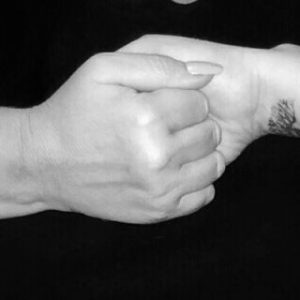10 main Mudras and when to use them
The term mudra applies to the use of hand gestures during meditation that carry specific goals of channeling your body’s energy flow.
- Thumb: Space
- Index Finger: Air
- Middle Finger: Fire
- Ring Finger: Water
- Pinky Finger: Earth
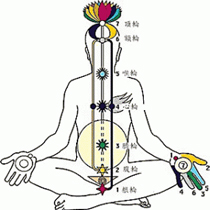

This is probably the most familiar mudra in mainstream society. Meditators are often seen pairing this mudra with their practice. The intention of the Gyan mudra is to improve your concentration and sharpen your memory. This is a great mudra to use when seeking to gain knowledge. Try holding this mudra while meditating for insight into your life or a specific issue.
Method: This mudra is performed by touching your index fingertip to the tip of your thumb, while holding your other three fingers straight.
Elements: Space + Air
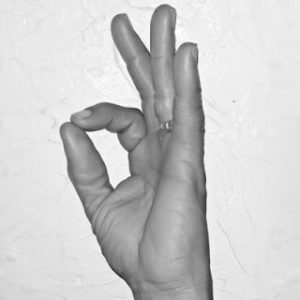
This mudra is used for mental clarity. You perform this gesture when you need to understand intuitive messages from your subconscious (i.e., dreams or meditations that puzzle you). One of the most powerful benefits of this mudra can be found in the improvement of communication, such as improving internal and external dialogue.
Method: This mudra is performed by touching your thumb to your pinky finger, while holding your other three fingers straight.
Elements: Space + Earth
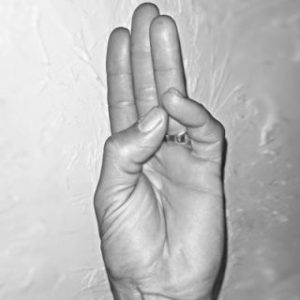
This gesture is used to improve intuition, alertness, and sensory powers. It also purifies your emotions and thoughts.
Method: This mudra is performed by touching the tip of the middle finger to the thumb tip, while keeping the other three fingers straight and relaxed.
Elements: Space + Fire

The Prana mudra is said to be one of the most important mudras due to its ability to activate dormant energy in your body. Prana is the vital life force within all living things. This mudra will help awaken and enliven your personal prana, and put you more in tune with the prana around you.
Method: Perform this mudra by touching your ring and pinky fingers to the tip of your thumb, while keeping the other two fingers straight.
Elements: Space+ Water
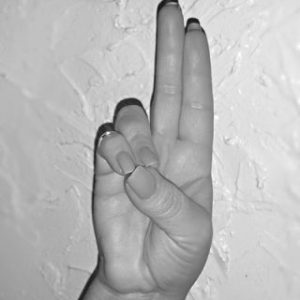
The Dhyana mudra is shared across several eastern meditation disciplines. The Buddha is often pictured doing this gesture. The significance of this mudra is to bring you into deeper, more profound concentration. This gesture can also help bring you tranquility and inner peace.
Method: To do the Dhyana mudra, simply sit with your hands facing upward, right hand resting on top of your left palm. The right hand, representing enlightenment and higher spiritual faculties, rests over the left hand, representing the world of maya, or illusion.
Elements: All
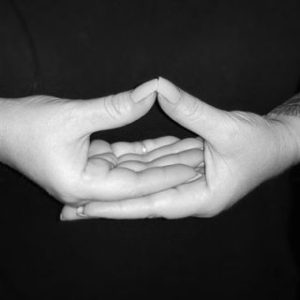
The Surya mudra is intended to increase the solar/fire element in the body and improve metabolism and digestion. It is also useful in reducing heaviness in the body and to help ward off colds, since it increases core body temperature.
Method: Perform this mudra by bending your ring finger to the base of your thumb so that your thumb touches the ring finger’s knuckle. Stretch your other three fingers straight without stressing the hand.
Elements: Space+ Water
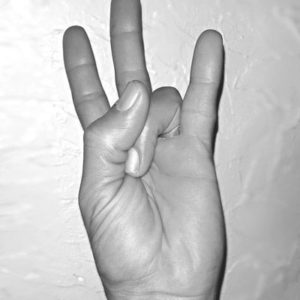
This mudra is often associated with Shiva as it applies to your internal transformative abilities. The word Rudra means ”lord” in Sanskrit, which is fitting for this gesture because the main benefits affect your personal power center—the solar plexus. It is said to improve clarity and concentration of thought. Often this mudra is prescribed for those dealing with dizziness, exhaustion, and chronic tension in their body. You can use the Rudra mudra (say that out loud for a laugh) to energize your physical body and empower you to reach your highest potential or goals.
Method: To do this mudra, connect your thumb to your index and ring fingers while keeping your other two fingers as straight as you can.
Elements: Space + Air + Water
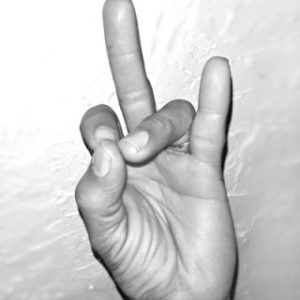
The Apana mudra is good for mental or physical digestion and for eliminating waste material from the body. This gesture may also be a form of aiding in mental and emotional digestion when applied to “evil” outside of the body.
Method: To do this posture, bring your second and third fingers to your thumb. The way you position your fingers may differ depending on the discipline you are learning from. Some say that you should rest the two fingers just slightly behind the tip of the thumb, but in many depictions, this mudra is demonstrated by bringing the middle and ring finger to the tip of the thumb.
Elements: Space+ Fire+ Water
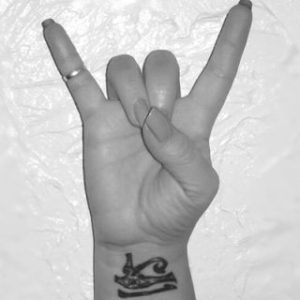
The Vayu mudra is good for diseases related to air imbalances, such as gas-related pain, flatulence, joint pain, bloating, and abdominal discomfort. This mudra helps regulate both mental and physical, relieving them by bringing your air element back into its proper flow.
Method: At first glance, this mudra may seem very similar to the Gyan mudra. The difference is the Vayu has you connect the thumb to the knuckle or hump of the index finger, as opposed to the fingertip in Gyan. Press down on the index finger to your level of comfort; this gesture is intended to relax not strain the joint. For optimal results, do your Pranayama exercises while holding this mudra.
Elements: Space + Air

The Ganesha mudra is widely used and is named after the Hindu Ganesh. Ganesha is said to be a remover of obstacles. Similarly, this mudra is great for relieving yourself of all types of obstructions in your life; it can help you regain positivity and courage when dealing with hard times. By performing this mudra, you bring your attention and energy into the heart center, opening up your lungs and heart to the subject of your meditation.
Aside from the mental and spiritual benefits on your heart chakra, the pulling motion is also beneficial to your cardiac muscles and good for tension in this area of the body.
Method: Place your left hand in front of your chest with your palm facing outward and left thumb down. Next, place your right hand in front of your left with your right palm facing toward you and your left palm. Lock your fingers together, holding them in a half-bent position like a claw.
During your meditation, inhale deep, holding your hands in this gesture, then pull outwardly on your hands as you exhale without unlocking your fingers. Repeat this motion up to six times, then reverse the gesture (i.e., put your right hand in front of your chest facing outward with the thumb down). Be sure to perform this mudra the same number of times in each direction to maintain the balance of the pulling act.
Elements: All
Courtesy Leo Carver
